Banknote art
Banknotes represent utility and art graphics at their best. Banknotes are printed using the best possible printing technology to prevent counterfeiting. The visual motifs, in turn, reflect the artistic style of the period when the banknotes were designed.
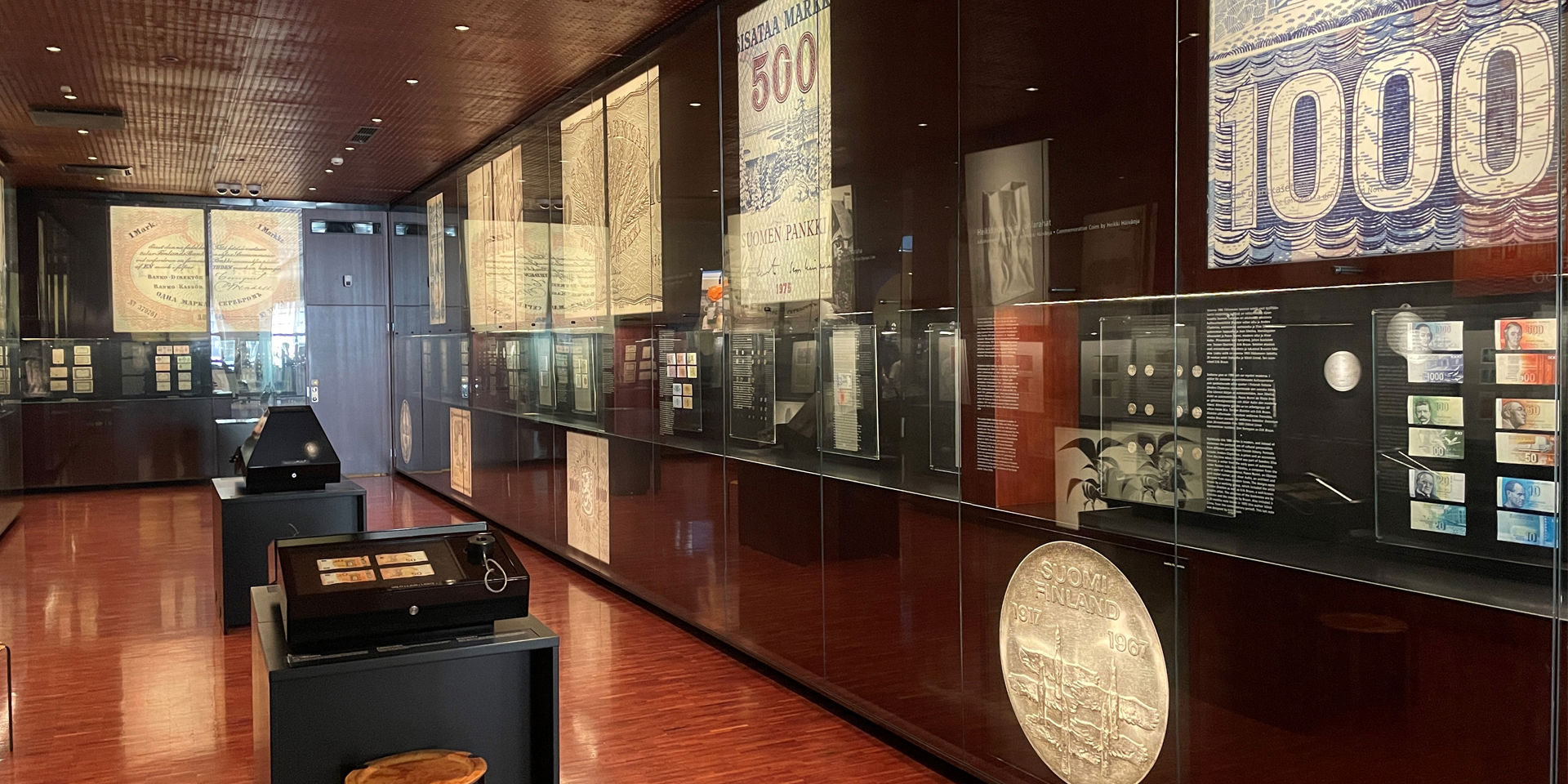
The first banknotes issued by the Bank of Finland were denominated in kopecks: 25, 50 and 75 kopecks from 1811. They were monochrome and one-sided.
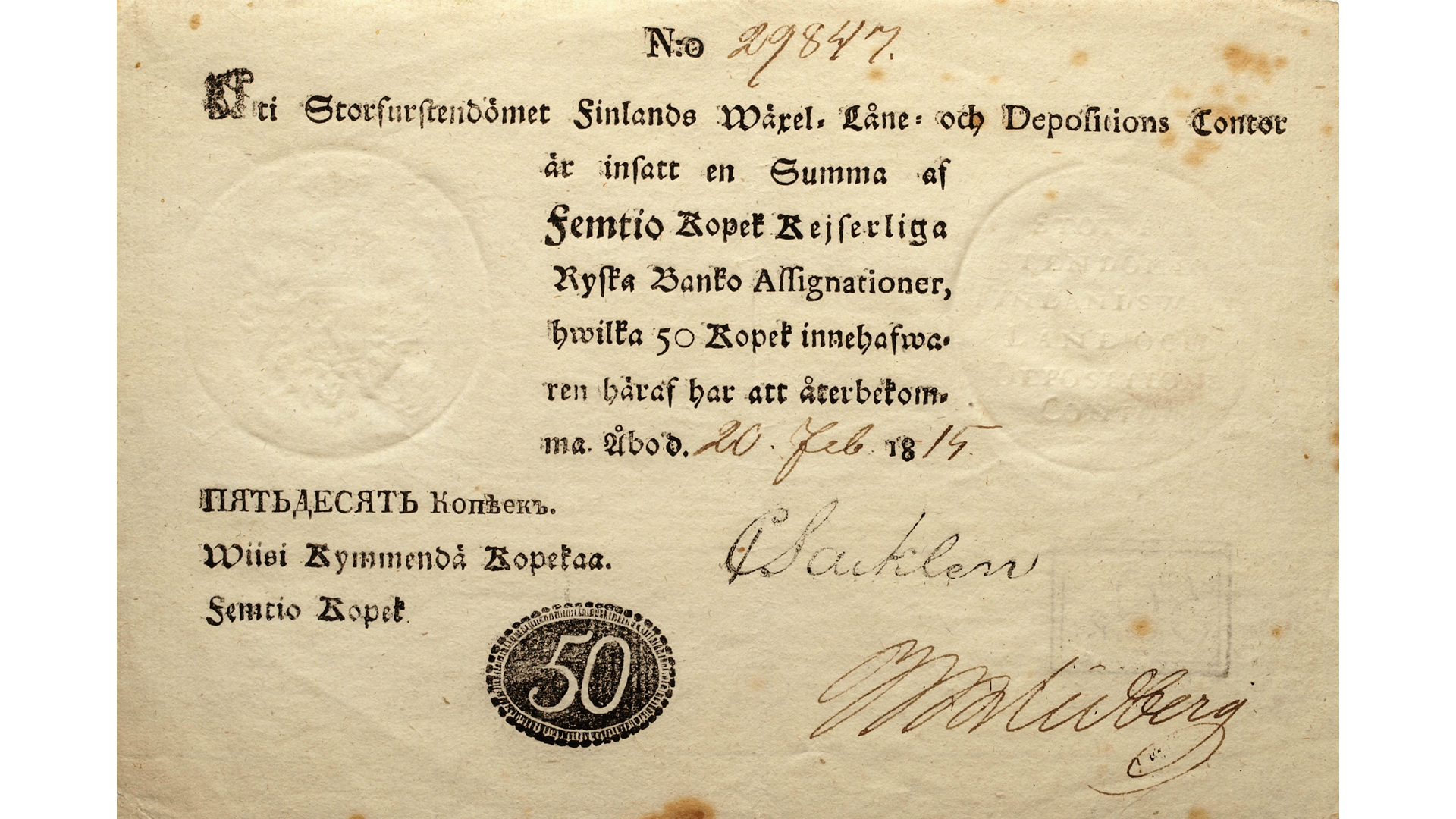
Colour was added to rouble banknotes in the 1840s, when a colour border was added to them.
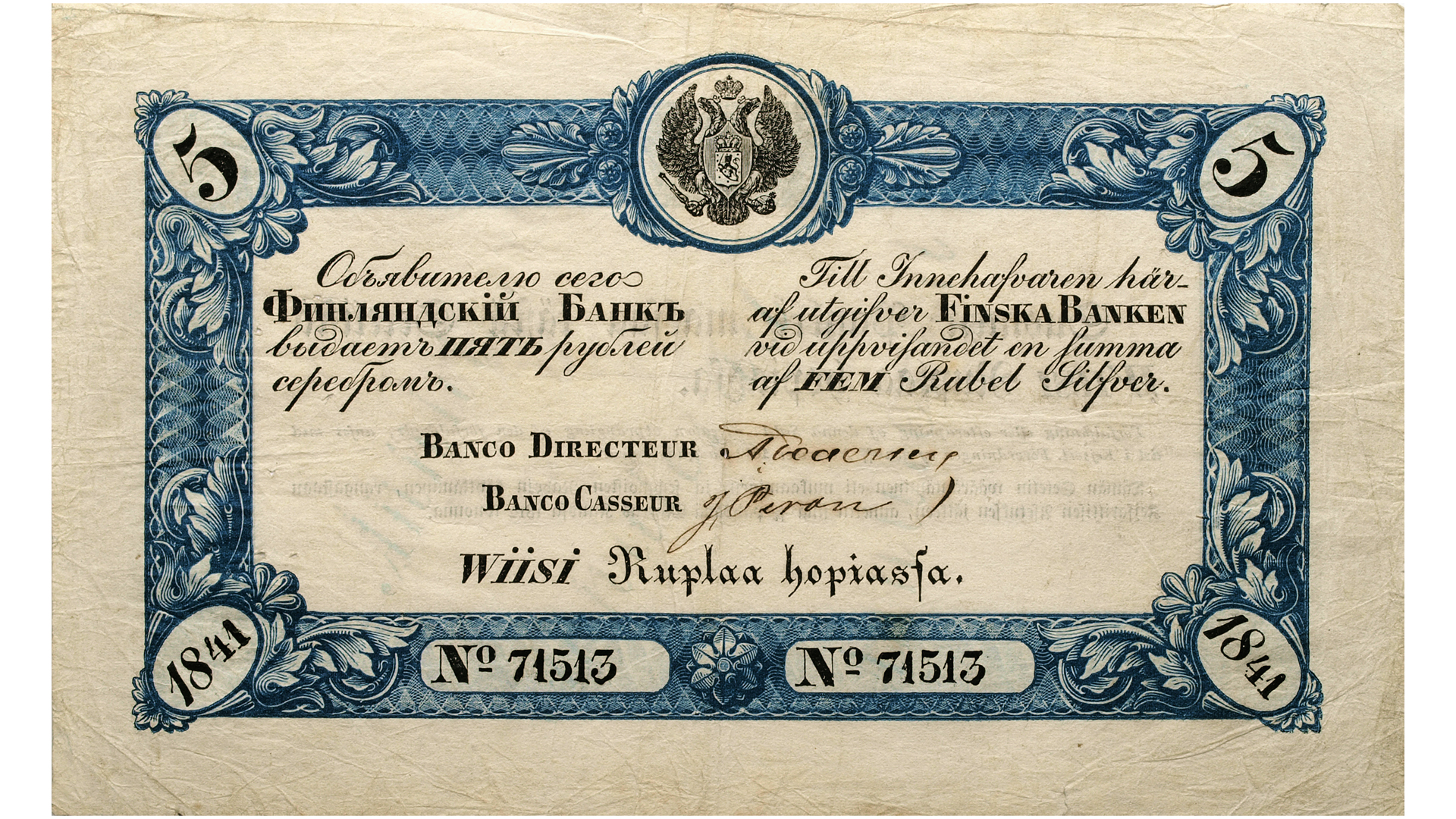
The first markka banknotes were issued in the 1860s, and they represented the Neo-Rococo style. The banknotes were designed by the St. Petersburg heraldic artist Aleksandr Fadeyev.
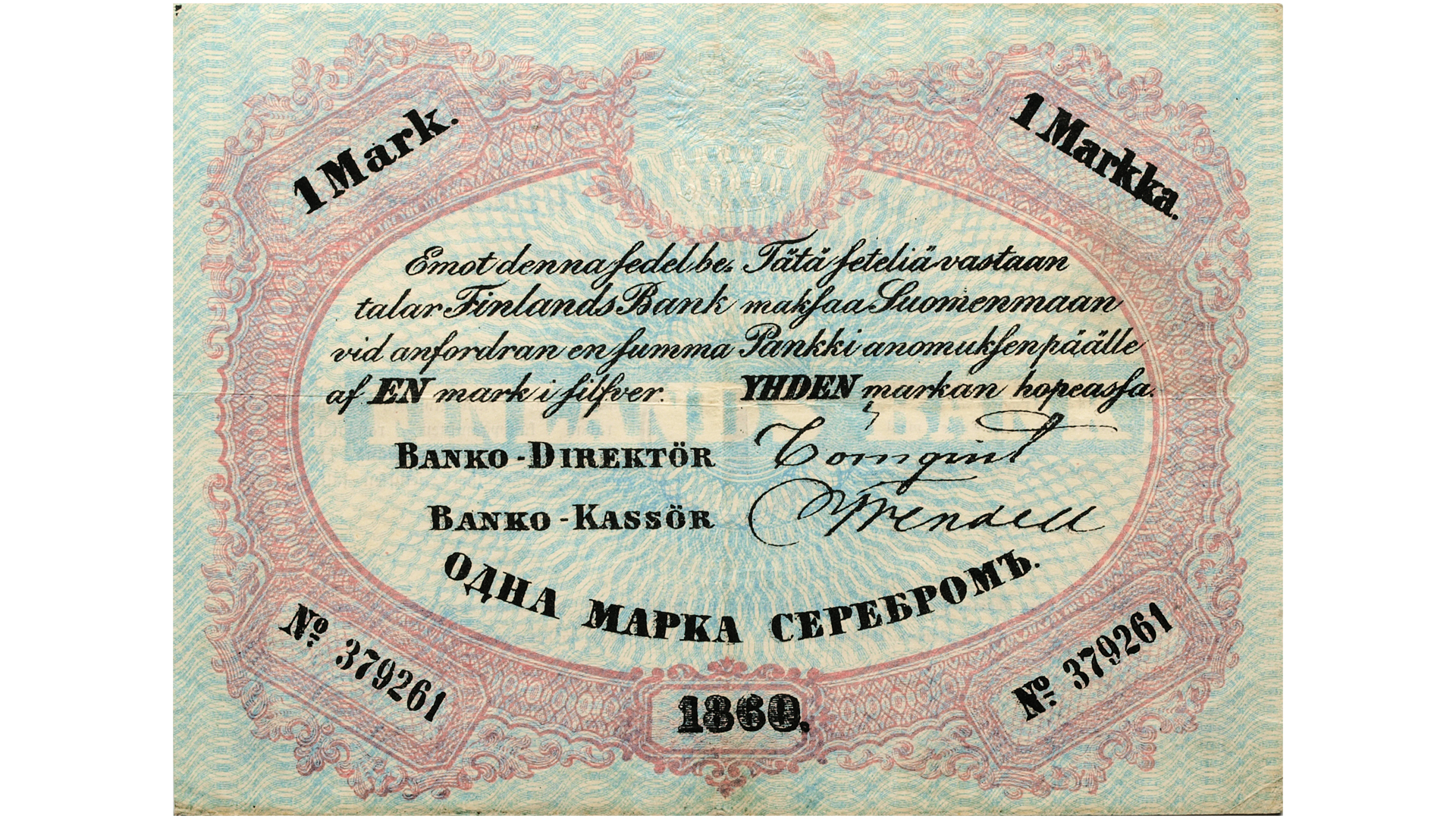
Towards the end of the 19th century, on the other hand, Neo-Renaissance influences were visible in banknotes.
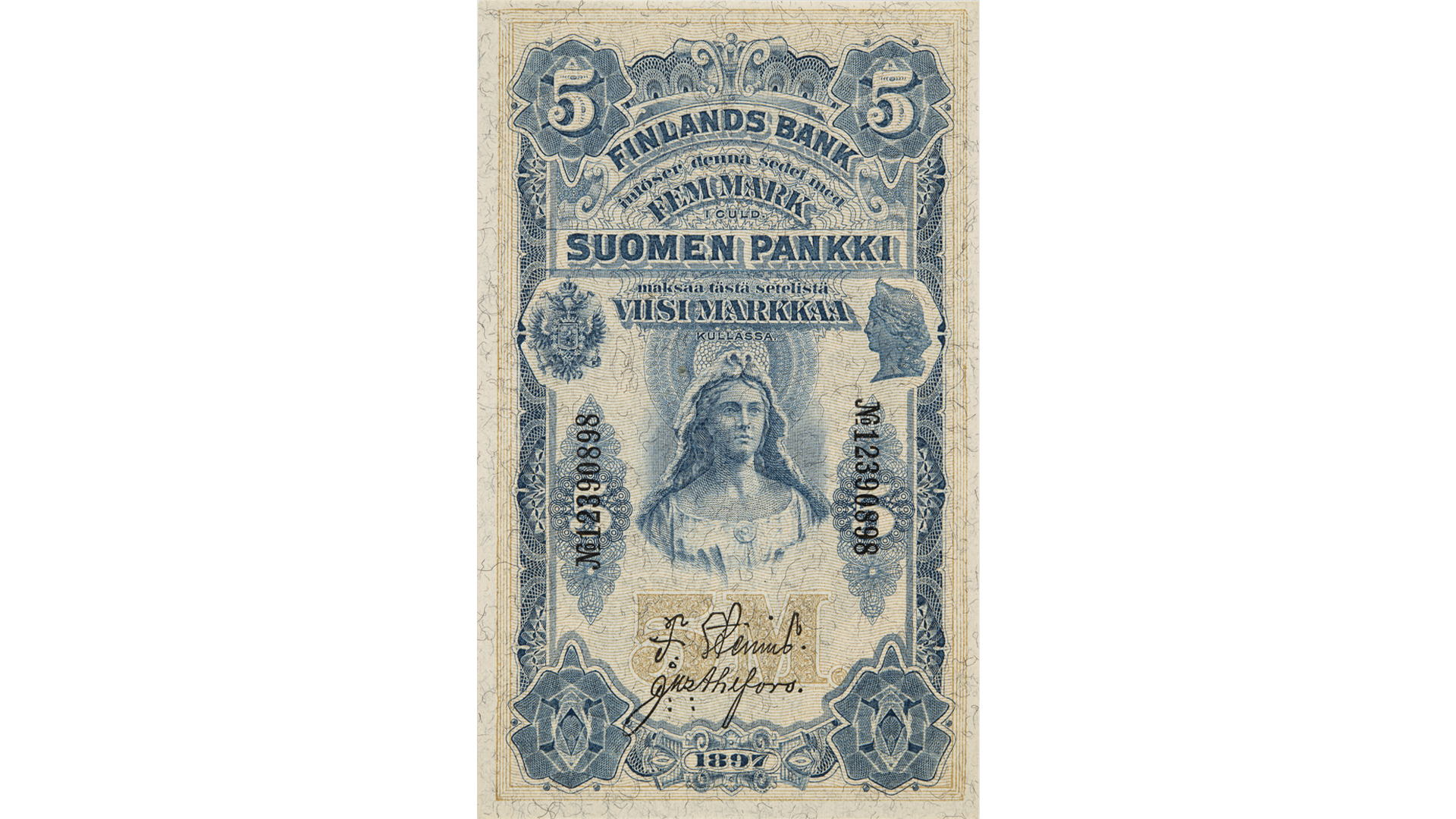
The banknotes of the 1909 series represented the Art Nouveau and National Romanticism styles. These and the Neo-Classical 1922 series banknotes were designed by architect Eliel Saarinen.
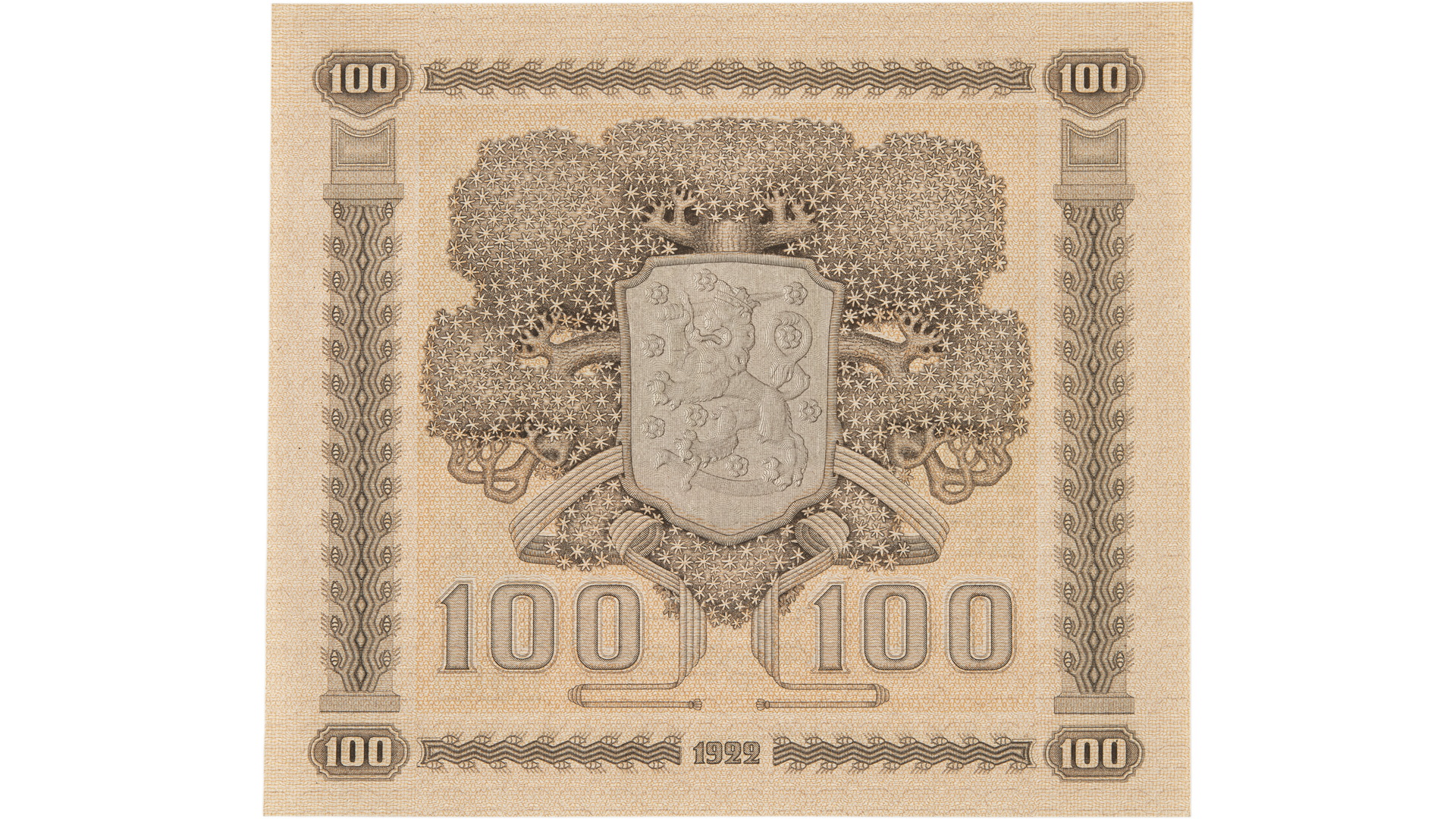
The first historical figure to appear on a markka banknote was J. V. Snellman, depicted on the 1940 series 5,000 markka banknote, which was designed by artist Aarne Karjalainen of the Bank of Finland Security Printing House.
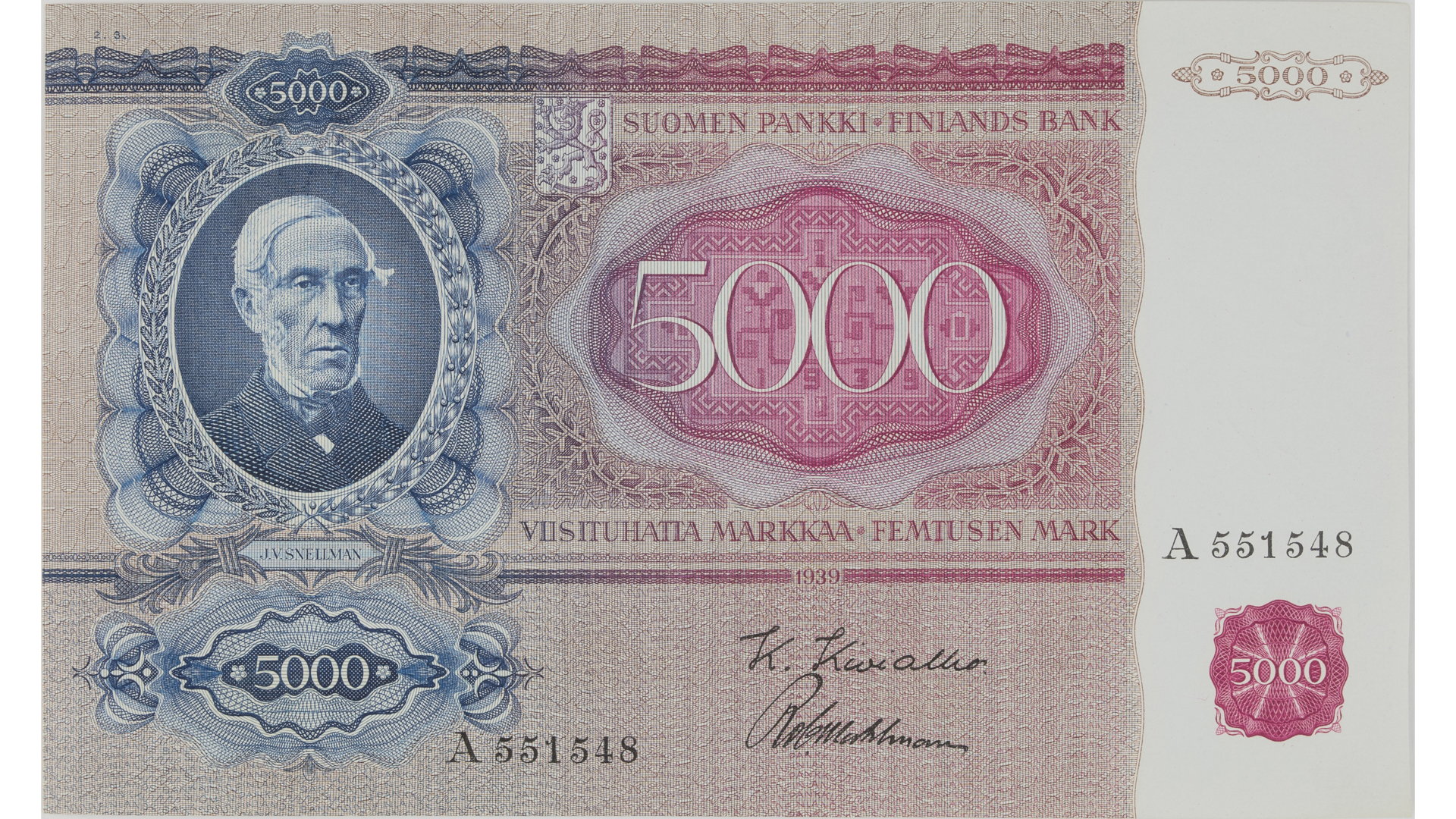
The 1955 Modernist banknote series was designed by Tapio Wirkkala, who won first and second place in a national design competition. Wirkkala had suggested cultural figures for the visual motifs of the banknotes: statesmen finally ended up on the banknotes, however. Markka-denominated banknotes were all the same size from 1955 until the introduction of euro banknotes.
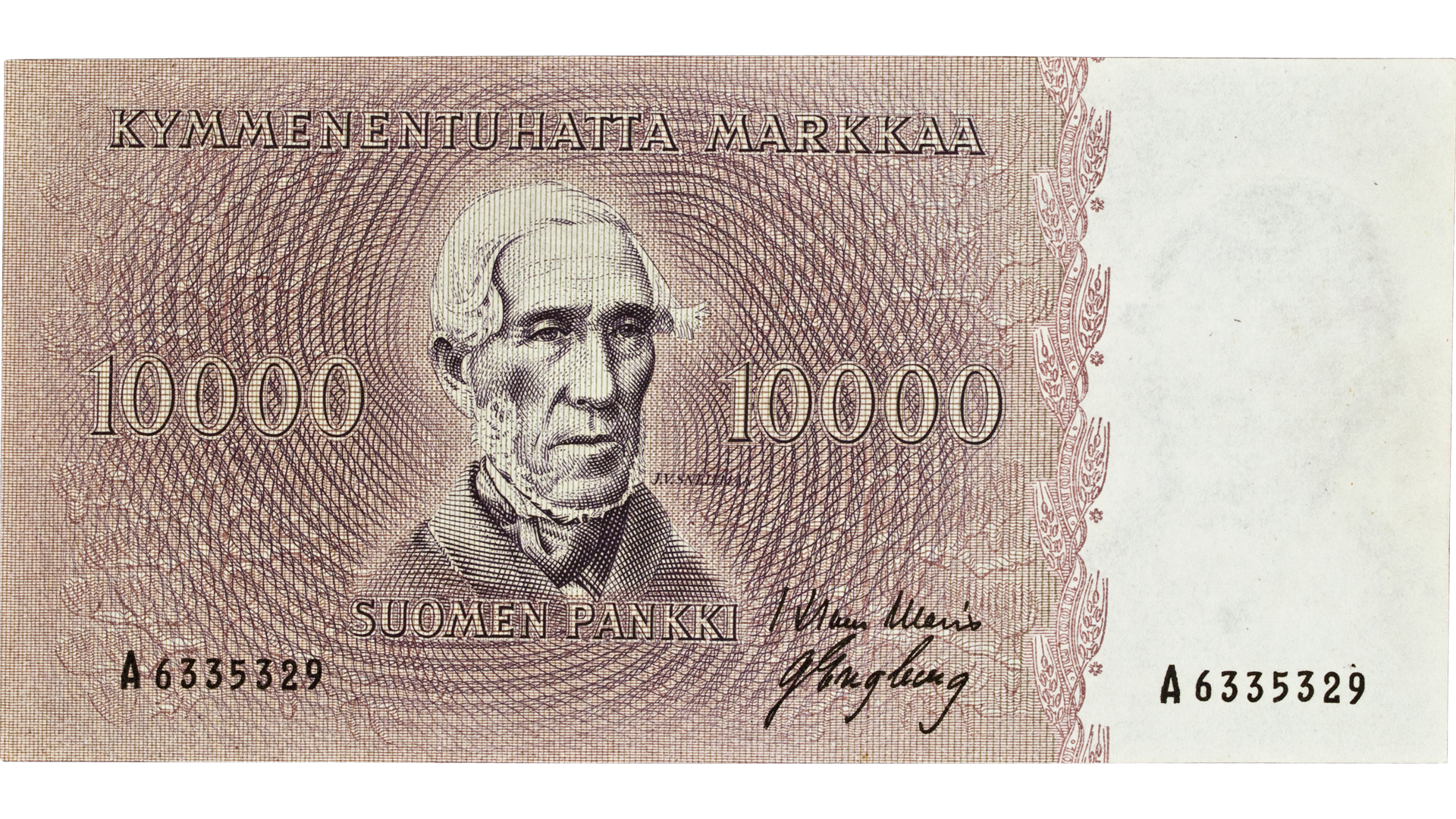
The first of the final series of markka banknotes was issued in 1986. The main designers were artist Torsten Ekström (front side) and graphic artists Erik Bruun (reverse side). The portraits on the banknotes, on the other hand, were the work of artist Eeva Oivo.

An EU-wide competition was organised to design euro banknotes. Robert Kalina, an artist at the Bank of Austria Banknote Printing Works, won the competition to design the first series of euro banknotes, which was issued in 2002.
